J. Michael Fuller
K7CIE
(formerly WN7CTN, 1963)
How did I get started in this crazy, wonderful hobby of Amateur Radio?
When I was 5 or 6, my father built a cabinet that held a radio, phonograph and a bass reflex box with a speaker. These were times before our family had TV. Dad drilled holes for the knobs, dials and everything. It was made out of plywood and was painted light blue in color and sat right next to my bed. I used to awake early in the morning on Saturday and listen to the radio shows for a couple of hours before my parents awoke. There was a headphone jack and headphone that cut out the speaker, so that the sounds of the radio shows would not awake my parents. But I also discovered that after “lights out” I could plug in the headphone and my parents never knew that I was listening to radio after bed time. This radio that was built in to the cabinet was a Zenith which had different bands. I remember how much of a thrill it was to hear broadcasts in foreign languages. I was crazy about that radio.
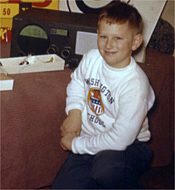 I must have been about 9 years of age in 1958 when for Christmas I received a Hallicrafter’s S-40A receiver. A real shortwave radio! I put, with my dad’s help, a long wire antenna that ran from the roof outside of my bedroom window to a metal “screw in” step on a telephone pole. Wow! I could listen to the world! I remember the thrill of “Radio Moscow”, “BBC Word Service” and other stations thousand of miles away in foreign countries. It was pure magic. I also started to hear Morse code and people talking over the air. My father called them hams. I must have been about 9 years of age in 1958 when for Christmas I received a Hallicrafter’s S-40A receiver. A real shortwave radio! I put, with my dad’s help, a long wire antenna that ran from the roof outside of my bedroom window to a metal “screw in” step on a telephone pole. Wow! I could listen to the world! I remember the thrill of “Radio Moscow”, “BBC Word Service” and other stations thousand of miles away in foreign countries. It was pure magic. I also started to hear Morse code and people talking over the air. My father called them hams.
My dad introduced me to a number of “hams” that he worked with at the EWEB (Eugene Water and Electric Board). These kind people showed me their radio equipment in their home and a couple had this equipment in their car. I was hooked. At ten years old, I wanted to be a ham. My father made a valiant attempt to teach me Morse code. I can remember lying on my parents’ bed with my father sending code through a key and “buzzer” arrangement. I must not of absorbed too much of the code, because he gave up after a while. The time was not right for me to learn Morse code.
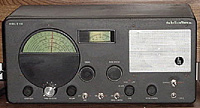 When I was in the seventh grade, I started as a paperboy carrying the Eugene Register Guard. For 5 years, it was my main source of income with the exception of the summer when I did crop work and maintained neighbors’ yards. (My parents didn’t believe in an allowance. They claimed it was a bad example, getting something for nothing.) After school in the evening and Sunday morning, I would deliver the paper to about 110 people. I also studied and practiced the piano during this same time frame. When I was in the seventh grade, I started as a paperboy carrying the Eugene Register Guard. For 5 years, it was my main source of income with the exception of the summer when I did crop work and maintained neighbors’ yards. (My parents didn’t believe in an allowance. They claimed it was a bad example, getting something for nothing.) After school in the evening and Sunday morning, I would deliver the paper to about 110 people. I also studied and practiced the piano during this same time frame.
A friend of my father, Woody Bates, invited my father to learn code and theory for a novice license in the evening once a week from a man in Springfield. I think I was fourteen at the time. I begged him to let me go. My mother objected because I had chores, a paper route, piano to practice, and homework. She thought I had too much to do already. (I was not too scholarly at this time and was a mediocre student at best.) I believe that my father convinced her to let me attend with him, but I had to get my chores done, practice my piano for 30 minutes, keep paper route going, not let my grades suffer, and so on.
My dad and I attended this amateur radio class which was held in the living quarters behind Davidson’s Ice Cream Pallor in Springfield, Oregon. The code was taught and sent by leader of the class. I wish I could remember his name. When we learned all the characters, we were introduced to the “black box” which sent code. The black box was a code sending device that was roughly a foot cubical in shape. You wound it with a crank. There were a couple of terminal posts to connect the code oscillator up to. There was a lever with a point that you could set code speeds on a dial with and it played tapes at the corresponding speed with holes for the “dot” and “dashes”. When the arm went over one of these holes in tapes, it would touch a drum, completing the circuit and a sound would be produced.
This class seemed like it ran for many months, but I really don’t remember. The class started with about 10 people including a visually impaired student. There were only about 5 students when we finished. The test for the Novice was administered by General Class Licenses. Woody, my dad and I passed and a few other people. I was floating on air for weeks. And it seemed like it took forever for the FCC to issue the license. I think it was about 6 weeks! . I was 14 at the time, so this must have been 1963. Woody received the call sign WN7CTK, my dad received the call sign WN7CTM and my first call sign was WN7CTN.
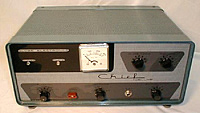 Now, I could start building my station. From my paper route earnings, I bought a Hy-gain 14-AVQ vertical antenna and mounted it on top of the house. I remember that the 40 meter radials were too short because we ran out of house. This was a 960 square foot house that I was raised in. My dad and I went to the town of Albany, Oregon where there was an amateur radio (Albany Ham Sales) store which mainly sold used equipment. I remember the smell of the place the most. It was unique and filled with electronic parts smells that I love to this day. I bought a “Globe Chief Deluxe Transmitter” and 5 crystals to go with it (4 each of the 40 meter crystals and 1 each of 15 meter crystal.) It was a thing of love. It had a 6AG7 oscillator driving two parallel-connected 807 transmitting amplifier tubes. It was capable of producing 90 watt on all bands between 80 and 10 meters. Of course having a novice class license, I could only use 75 watts. I built a bookshelf above my desk where the equipment resided. Now, I could start building my station. From my paper route earnings, I bought a Hy-gain 14-AVQ vertical antenna and mounted it on top of the house. I remember that the 40 meter radials were too short because we ran out of house. This was a 960 square foot house that I was raised in. My dad and I went to the town of Albany, Oregon where there was an amateur radio (Albany Ham Sales) store which mainly sold used equipment. I remember the smell of the place the most. It was unique and filled with electronic parts smells that I love to this day. I bought a “Globe Chief Deluxe Transmitter” and 5 crystals to go with it (4 each of the 40 meter crystals and 1 each of 15 meter crystal.) It was a thing of love. It had a 6AG7 oscillator driving two parallel-connected 807 transmitting amplifier tubes. It was capable of producing 90 watt on all bands between 80 and 10 meters. Of course having a novice class license, I could only use 75 watts. I built a bookshelf above my desk where the equipment resided.
My station, I thought was complete. A Hallicrafter’s S-40A Receiver, Globe Chief Deluxe Transmitter and a Hy-gain vertical antenna. I built a transmit / receive relay which worked off of the power in the back of the transmitter. What a disappointment! The S-40A receiver was “too wide” of a receiver. I should have realized this. I was crestfallen. I didn’t know what to do. I think Woody Bates suggest that I try Heathkit Q-Multiplier kit.
 I ordered this Q-Multiplier from Heathkit. Again when you are young, time seems to take forever. I had my novice license and had only been on the air a few times. After weeks of waiting, it arrived. This was my first “electronic kit” that I built. And of course, I mad a few errors in construction which took me a while to figure out. I know that my father helped me calibrate and test it at the “meter room” of the EWEB. I had such high hopes for this “Q-Multiplier” making my receiver usable. It did after a fashion, but I was still not happy with the results. My receiver tended to “drift” and didn’t seem to have the sensitivity that I needed. I worked a few more contacts mostly strong local stations. All this time, I felt that pressure of the one-year timer was ticking down on my novice license. I ordered this Q-Multiplier from Heathkit. Again when you are young, time seems to take forever. I had my novice license and had only been on the air a few times. After weeks of waiting, it arrived. This was my first “electronic kit” that I built. And of course, I mad a few errors in construction which took me a while to figure out. I know that my father helped me calibrate and test it at the “meter room” of the EWEB. I had such high hopes for this “Q-Multiplier” making my receiver usable. It did after a fashion, but I was still not happy with the results. My receiver tended to “drift” and didn’t seem to have the sensitivity that I needed. I worked a few more contacts mostly strong local stations. All this time, I felt that pressure of the one-year timer was ticking down on my novice license.
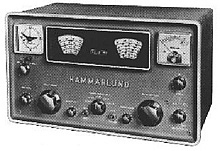 I decided that I needed a new receiver. Back to Albany I went to the Amateur Radio Store. I traded my Hallicrafter’s S-40A and Q-Multiplier plus some sum of money that I thought was a lot at the time for a Hammarlund HQ-100 receiver. Hot Dog! I was set. Now after about 6 months, I could start really using my license. And use it I did. It was still hard to work contacts being “crystal bound” –they always seemed to be on the frequency that I didn’t have a crystal for. It was difficult, but I managed to work a number of stations. I felt that I needed to be on the air a lot air bring my 5 words per minute up to the required 13 words per minute in order to pass my general class license. I decided that I needed a new receiver. Back to Albany I went to the Amateur Radio Store. I traded my Hallicrafter’s S-40A and Q-Multiplier plus some sum of money that I thought was a lot at the time for a Hammarlund HQ-100 receiver. Hot Dog! I was set. Now after about 6 months, I could start really using my license. And use it I did. It was still hard to work contacts being “crystal bound” –they always seemed to be on the frequency that I didn’t have a crystal for. It was difficult, but I managed to work a number of stations. I felt that I needed to be on the air a lot air bring my 5 words per minute up to the required 13 words per minute in order to pass my general class license.
I will remind you that my father had his amateur radio license. He was my supporter and facilitator in this hobby. My Dad also interceded with my Mother who was not real crazy about this new hobby of mine. One day my father’s friend, Woody Bates wanted my father to get on the air. I helped him set up the station and make contact with Woody. And then he wanted me to leave the room. Dad was very self conscious. About an hour later, Dad came down the stair literally dripping with sweat. He made a statement to the effect that “he couldn’t do it”. This was the only time to my knowledge that my father was ever on the air. I could never inveigle him to get back on the air.
I looked forward to getting my “General Class License” and started studying. Woody and I went to a general class amateur which helped us get up our code speed. As things worked out, I was unable to get to Portland (100 miles away) before my Novice License expired. The first time I went to Portland, I earned my Technical License and the Call letter of WA7FVL. It was on my third attempt that I passed the code requirement of 13 words per minute and received my general class license. It was funny – I could receive code over the air at 15 to 20 WPM. But the perfect code at the FCC, probably coupled with the stress and traveling time to Portland, I would hear the code and not make the association with the letters. I was so embarrassed and frustrated.
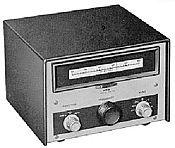 Now, I had my general class amateur radio license. One of the first things that I bought was a Heathkit VFO (HG-10) from my favorite and only amateur radio store in Albany. The Globe Chief Deluxe Transmitter was modified to supply the power for this VFO. I was happy with this arrangement. I never did like my general class call sign, WA7FVL. I worked CW and it was always getting misspelled by other stations. Now, I had my general class amateur radio license. One of the first things that I bought was a Heathkit VFO (HG-10) from my favorite and only amateur radio store in Albany. The Globe Chief Deluxe Transmitter was modified to supply the power for this VFO. I was happy with this arrangement. I never did like my general class call sign, WA7FVL. I worked CW and it was always getting misspelled by other stations.
But then something sad happened, but natural. Hormones kicked in and I discovered girls. I still got on the air, but much less frequently. I still worked CW. But between work, school and girls, Amateur Radio suffered. One term when I was a junior at the University of Oregon, I was so broke that I sold all my equipment to another Ham for $135.00. This was enough to pay for one term’s tuition at that time. At that time, I felt I needed a degree over my hobbies.
I have just return to Amateur Radio after a hiatus of 35 years. Why did I do it? I guess I missed the magic of Amateur Radio. I do consider it a type of magic. You can send messages long distances to people you will never meet. And they can, for a time share their magic with you. You must know the special alchemy of two way radio and its charms.
De J. Michael Fuller
K7CIE
|